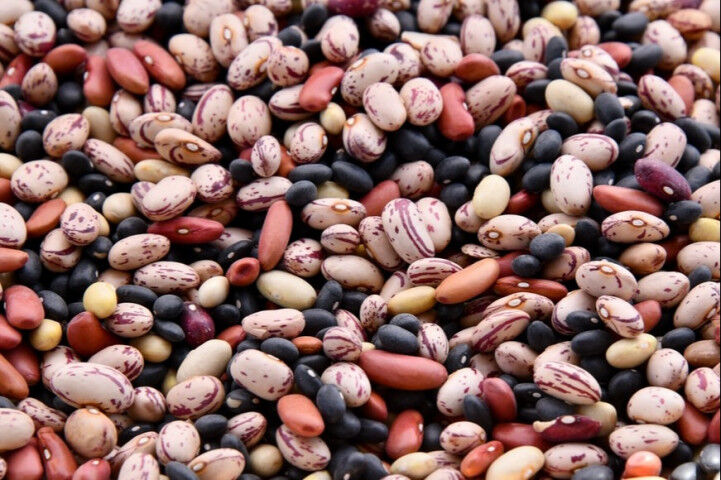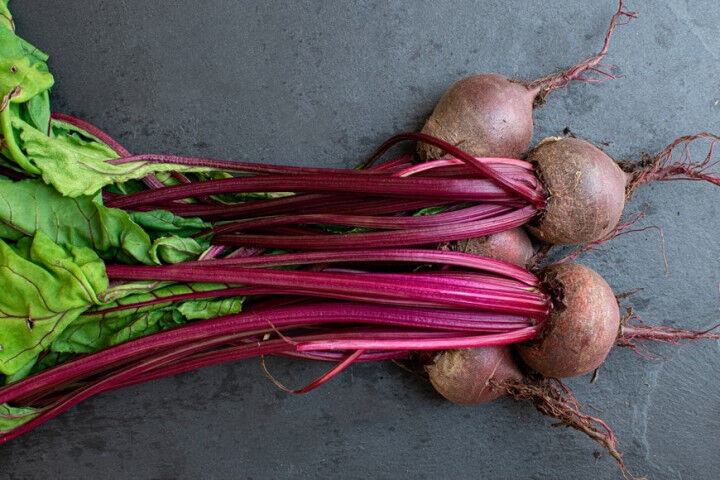Superfoods: What are they and why do they matter?
When you first see these culinary tidbits, they seem to be rather unassuming, every-day kinds of foods, commonly sold in supermarkets and neighborhood shops alike.
What makes these foods so surprising and desirable? Their excellent impact on our nutrition and overall health.
You could be forgiven for thinking we’re talking about some sort of dietary supplement, or a chemical addition to your foods, with the ability to lower cholesterol, protect cells from aging, and featuring an often tasty sensorial experience.
But we’re not talking about supplements or additives, we’re instead talking about Superfoods, tasty treats that are easily accessible to most budgets and palates.
Ultimately declared as an effective marketing tool coming out of Canada in 1949, but with little scientific data to back it up, superfoods in fact are a widely variable bunch, with little to help classify or group them together.
With a closer look, it becomes clear however, that many of the accredited and recognized superfoods are indeed options that we select repeatedly as part of our daily diets.
Nutritionists and experts agree that 1-2 superfoods consumed on a daily basis help us feel healthy and good, and contribute immensely to our enjoyment of top-quality, good food.
What are some Italian Superfoods?
Check out the list below of classic Italian Superfoods. Some of the selections are native foods to Italy, whereas others have been imported into Italy and subsequently transformed or modified to suit local tastes and preferences.
Naturally, all the listed foods are healthy and nutritious, but first and foremost, are delicious treats that can satisfy even the most demanding of tastes.
Oranges
Oranges were native to Southeast Asia, and made their way to Europe, and subsequently Italy, via the Silk Road in the 14th century. Second only to apples, oranges represent one of the world’s most popularly cultivated fruits.
Thanks to oranges’ naturally high flavonoid content, oranges provide an anti-inflammatory, antioxidant function. Oranges also help to detox our internal systems, and deliver a hefty burst of Vitamin C.
Thanks to these benefits, oranges are thought to also help reduce the risk of cardiovascular diseases and cancer.
Broccoli and Cabbage
We say Broccoli, but we really mean the whole Cabbage family: Turnips, Savoy cabbage, Cabbage, and the entire range of the Crucifer family, also known as Brassicaceae. This family of mid-size flowering vegetable plants contain remarkably healthy properties.
Throughout the past years, researchers have done a number of dietary studies of Broccoli and friends, the results of which seem to indicate that regular consumption of these vegetables may help prevent many types of tumors, in particular those that develop in the digestive system.
Legumes
Legumes sometimes get a bad rap for causing a bit of bloating, but we believe it’s a small price to pay for the immeasurable benefits that come with enjoying some legumes.
Soluble and insoluble fiber content in legumes help absorb sugars and cholesterol. When you consume legumes, a sense of satiety and fullness is quickly achieved, which goes a long way in limiting the intake of calories.
Beans with richly-colored exteriors have a higher content of antioxidants compared to their pale-colored cousins. Italy is home to a wide range of different legume types and variety, with unusual varieties cultivated in the past.
Varieties include black lentils from Leonforte (Sicily), Trasimeno beans (Umbria), Badda beans from Polizzi (Sicily), chickpeas from Valentano (Lazio), Sorana beans (Tuscany), and zolfini beans from Valdarno (Tuscany).
Blueberries
Blueberries haven’t always been considered a Superfood thanks to its relatively low Vitamin C content. However, these small dark blue berries that are often acidic and not sweet, have recently been enjoying a second life thanks to the discovery and identification of nutritional elements far greater than just Vitamin C.
Blueberries contain an abundance of anthocyanins, a compound thought to be effective in tamping down the development of tumoral activity, as well as being naturally anti-inflammatory. The presence of resveratrol, also found in compound form in black grapes, helps blueberries perform these amazing feats.
As if this weren’t reason enough, eating blueberries has also been shown to slow down the march of cognitive degeneration, a consequence of senile dementia.
Extra-dark Chocolate
For the sweet-tooth readers out there, research has shown that eaten in specific serving sizes, dark chocolate can help lower blood pressure and improve blood circulation, both elements that can assist the body’s cardiovascular system maintain a healthy functionality.
Why does chocolate have this effect on our body’s cardiovascular systems? Thanks to the presence of flavonoids naturally found in cocoa. Therefore, the higher the amount of raw cocoa in your chocolate, the more beneficial the results.
The best way to benefit from this wonderful aspect is by consuming very dark chocolate, with at least 70% cocoa at the very least, or consuming cocoa powder which is free of all fats.
As you indulge in a fan favorite, don’t overlook the caloric side of chocolate however. Generally speaking, a serving of 20 grams is plenty, and will gratify your palate as well as emit its naturally-occurring benefits.
Tomatoes
Tomatoes don’t have to be eaten raw only in order to absorb their nutritional features, as cooking can sometimes enhance these features.
Tomatoes contain lycopene, a carotenoid that gives tomatoes their red color. Tomatoes are also a powerful antioxidant, and are quite adept at neutralizing free radicals, which in turn protect both cells and DNA from the aging process.
Tomato’s naturally-occuring lycopene also serves to help our skin protect us from the dangers and damages of the globe’s ultraviolet rays.
The Blue Fish Group
Fish falling into the group of Blue Fish, or Pesce Azzuro in Italian, include tasty Anchovies, Sardines, Mackerel and Herring. While these fish are generally considered “poor” fish thanks to the immense stocks and easy access for fishing terms, these options are actually quite rich in omega-3.
All the fish within this group are chock-full of the essential fatty acids our bodies need as we don’t produce them independently, but absorb them through food sources.
Omega-3 fats help ward off cardiovascular disease, and have a positive impact on mental health, as they’re proven to help improve mood and cognitive abilities.
Grapes
Grapes are one of Italy’s most prolific products, as the country holds the world record for the cultivation of table grapes. Colloquially referred to as “vegetable milk,” the comparison arises from both resources’ wealth of nutrients.
Grapes have been proven to be antioxidant and anti histaptic. They are also known as detoxifying and diuretic food sources, and provide energy and minerals our bodies crave.
Grapes have been shown to eradicate the presence of free radicals, thanks to its resources of polyphenols, and the naturally-occurring antioxidant substance resveratrol. By eliminating free radicals, the body’s cells are protected from premature aging and cancerous mutations - benefits that nobody can argue with.
Resveratrol also contains antifungal properties that are helpful in grape skins as they protect against fungal incursions. The red grapes, even when enjoyed in wine form, have been shown to be particularly effective from this perspective.
The resveratrol compound is also an anti-coagulant, allowing the body’s blood to become thinner and more fluid. The walls of our blood vessels also have demonstrated increased tone thanks to the intake of resveratrol.
Beets
Beets are one of our most ancient Mediterranean products. These beautiful root vegetables are bursting with helpful nutrients including fiber, folic acid (Vitamin B9), Manganese, Potassium, Iron, and Vitamin C.
One of the few naturally red vegetables with a sweet taste, it can be consumed by diners with a wide range of dietary needs, including those with diabetes or hyperglycemia. Thanks to its percentage of folates, beets are also a strongly recommended vegetable to enjoy during pregnancy.
While it might seem like a complete list, there are plenty more Italian superfoods to enjoy. Try them all, and find your favorites - here’s some more to get you started: red onions, carrots, chili peppers, garlic, black corn (mais corvino), pomegranates, red radicchio, radishes, and sour cherries.
3 Classic Italian superfood recipes:
- Chickpea, Tomato, and Carrot Soup
- Pasta with Turnip Greens, Anchovies, and Chopped Walnut
- Raw Spinach Salad with Orange Zest, Orange Juice, and Extra-virgin Olive Oil Dressing
Just how amazing are Superfoods?
Don’t get your hopes up, as there’s really no such thing as a miracle food. However, the foods and ingredients we’ve mentioned above can help us increase our nutrient intake, and can provide us with a selection of vitamins and nutrients of vital importance to our bodies.
These elements and compounds are at the foundation of any truly balanced, healthy diet.




